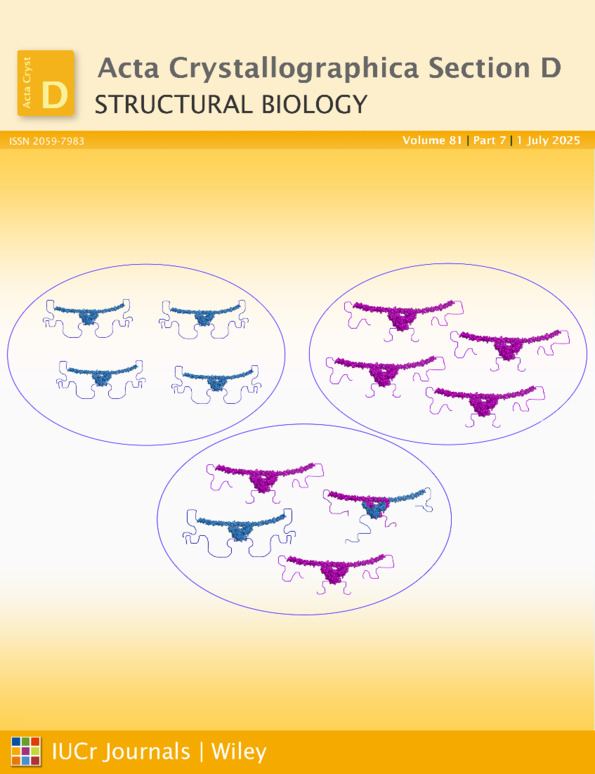Preliminary neutron diffraction studies of Escherichia coli dihydrofolate reductase bound to the anticancer drug methotrexate
Abstract
The contribution of H atoms in noncovalent interactions and enzymatic reactions underlies virtually all aspects of biology at the molecular level, yet their `visualization' is quite difficult. To better understand the catalytic mechanism of Escherichia coli dihydrofolate reductase (ecDHFR), a neutron diffraction study is under way to directly determine the accurate positions of H atoms within its active site. Despite exhaustive investigation of the catalytic mechanism of DHFR, controversy persists over the exact pathway associated with proton donation in reduction of the substrate, dihydrofolate. As the initial step in a proof-of-principle experiment which will identify ligand and residue protonation states as well as precise solvent structures, a neutron diffraction data set has been collected on a 0.3 mm3 D2O-soaked crystal of ecDHFR bound to the anticancer drug methotrexate (MTX) using the LADI instrument at ILL. The completeness in individual resolution shells dropped to below 50% between 3.11 and 3.48 Å and the I/σ(I) in individual shells dropped to below 2 at around 2.46 Å. However, reflections with I/σ(I) greater than 2 were observed beyond these limits (as far out as 2.2 Å). To our knowledge, these crystals possess one of the largest primitive unit cells (P61, a = b = 92, c = 73 Å) and one of the smallest crystal volumes so far tested successfully with neutrons.




